What do dead bugs, pine needles, worms, and sand have in common? Maybe you should add soil, bark, and pond water to that list. And that’s only the beginning. All these things, and more, may find their way into your kids’ hands and under the lens of a pocket microscope while on a nature walk. Today, Laura Stroup, founder of Firefly Nature School and mom to three wildlings, shows you how to get a close-up look at nature through the lens of a pocket microscope.
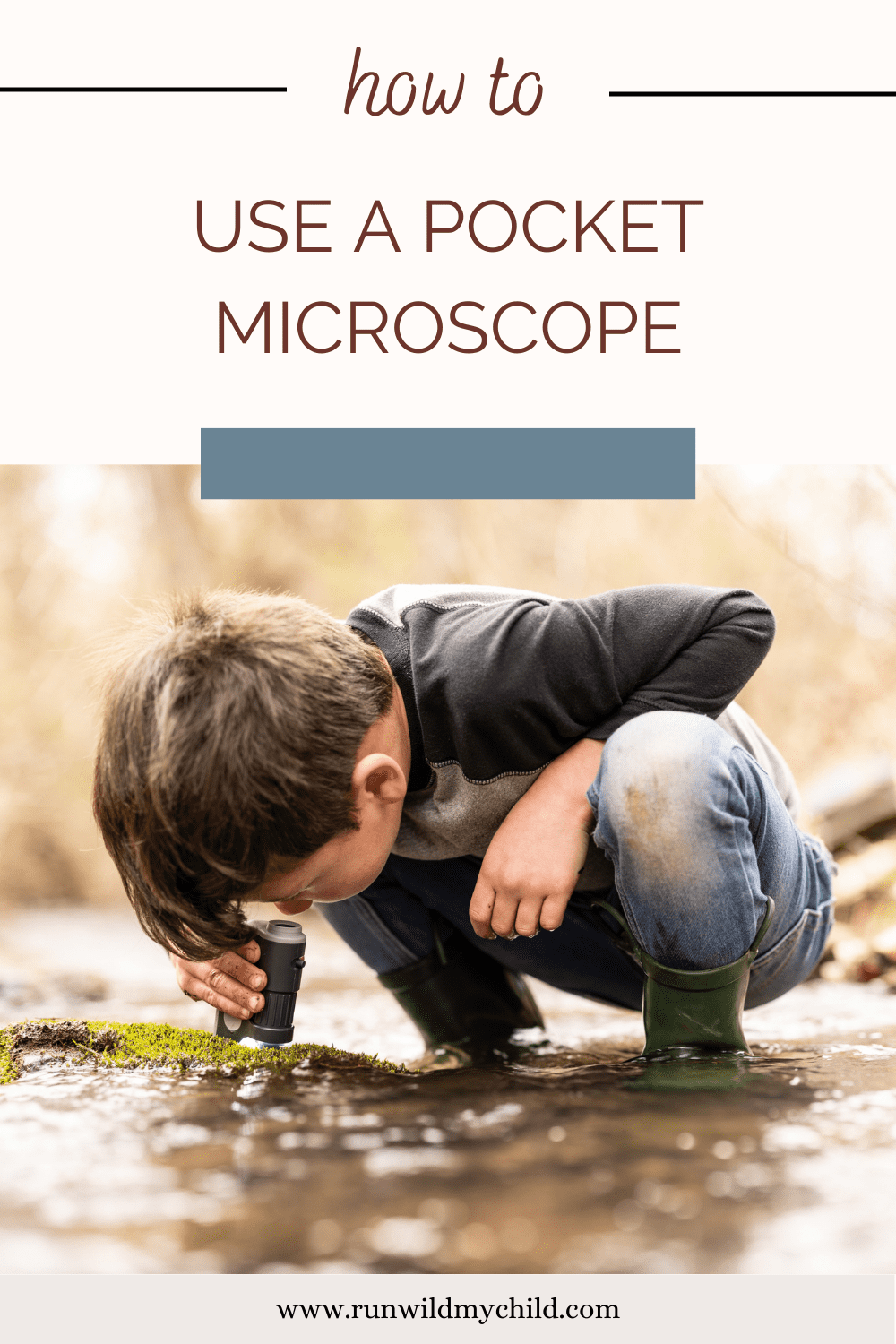
What is a pocket microscope?
Pocket microscopes are so named because they easily fit inside the pocket of your clothing or backpack. Their small size and light weight make them a good choice to take on a nature walk or hike. They are also sturdy and relatively simple to operate.
Once you learn how to use them, you can teach your kids to do the same. Soon, you’ll wonder what everything looks like magnified under the microscope.
Best pocket microscopes for kids
There are many pocket microscope brands on the market. Prices range from $10-$50. And maybe the best part of small microscopes is the small price tag. Many can be purchased for under $20. They make great stocking stuffers or birthday gifts for your kids or their friends. You can even purchase small cases for your microscope for extra protection and battery storage when transporting them. If your kids jump, climb, and tumble on a nature walk like mine do, then the storage case might be worth the extra cost.
When choosing a pocket microscope, there are many features you can consider, including, size, magnification ability, camera function, light, and durability. Here are a few choices for a great pocket microscope for kids:
- Carson Microbrite Plus
- Carson Microflip
- Carson Pocket Micro
- Carson Micro Mini
- APEXEL Digital Microscope with LCD Screen
- USB Digital Microscope
The one we use is the Carson Microbrite Plus. As is the case with many other brands, it has a light, zoom, focus ring, eyepiece, and lens. This particular microscope can zoom in anywhere from 60 to 120 times magnification.
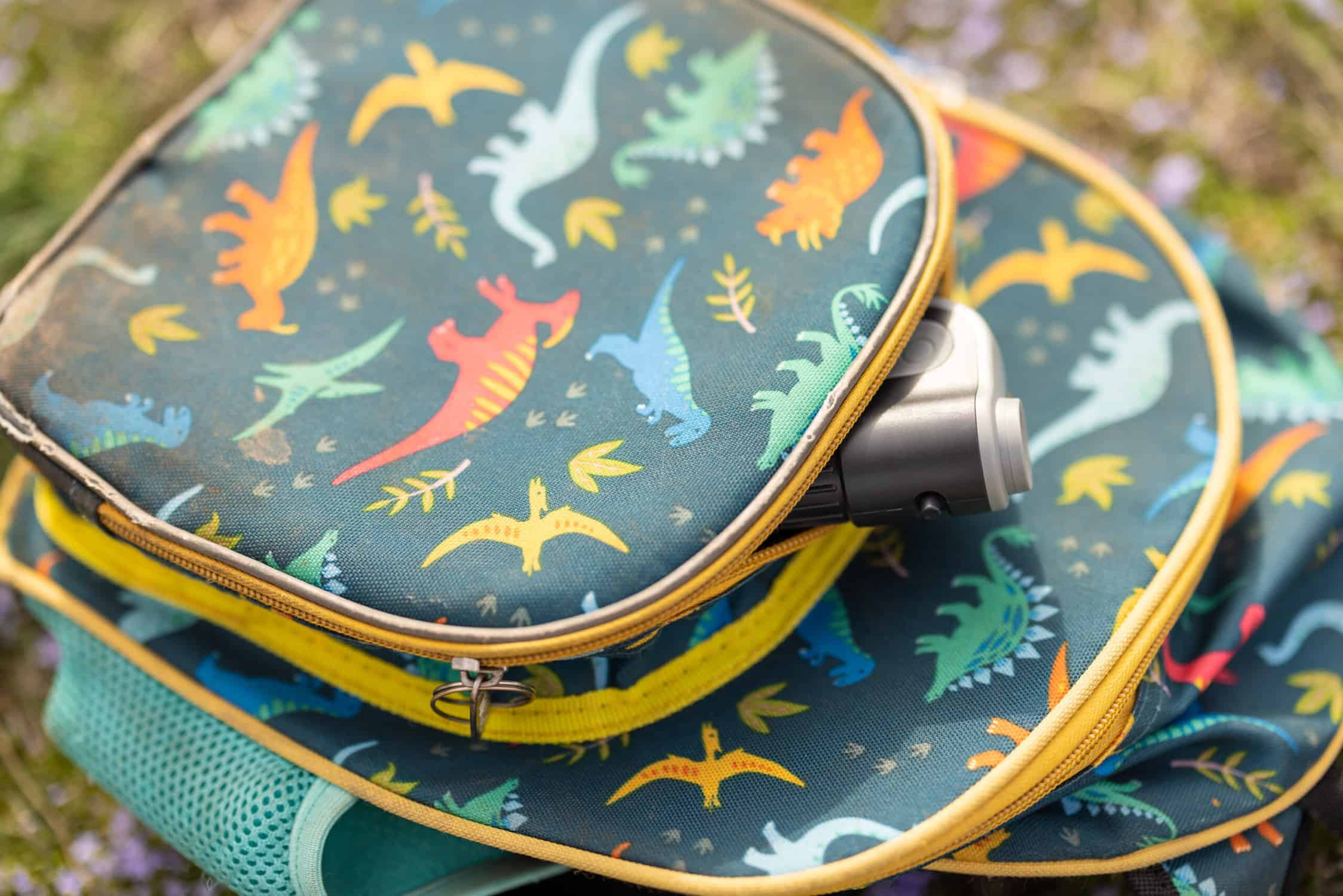
Starting with a pocket microscope
Many people feel intimidated when they first use a microscope, but starting with a pocket microscope can make the process seem less daunting, especially when you’re going to teach your kids how to use it, too.
Eventually, when you move on to a larger microscope down the road, you will already have microscope basics under your belt. And teaching your kids what you’ve learned will provide them with an invaluable skill they can use throughout their education.
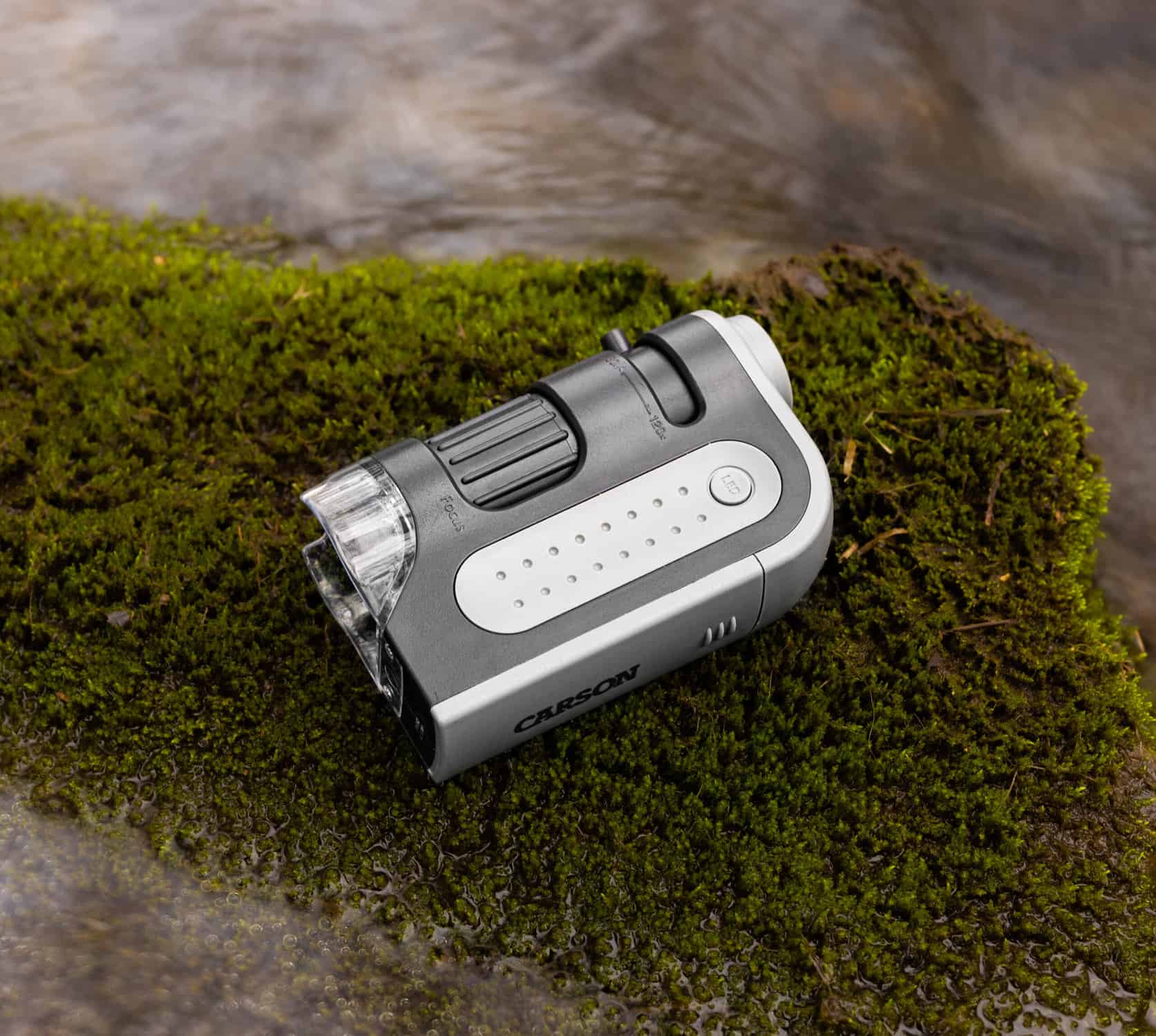
How to use a pocket microscope
To begin, you will want to keep the microscope on a flat surface. Then, find something around you worth a close-up look. A piece of fabric, napkin, hair, even your phone screen will work. And placing a light-colored paper or plate under the object will make it easier to view with your microscope.
Turn on your microscope’s light, and place the scope on the object so the lens is over the top of what you want to see. Make sure the zoom adjustment is on its lowest power. For example, if the zoom adjustment goes from 60x to 120x, you’ll want it set to 60x.
Now it’s time to take a peek. Put your dominant eye up to the eyepiece on top of the microscope and look through while closing your other eye. Likely, the image will be blurry. While looking through the eyepiece and holding the microscope still, slowly turn the focus ring until the object comes clearly into view.
Once you see it, wow! It only gets better by zooming in closer. Move the zoom to the highest power, and again, use the focus ring to see the image clearly, with even more detail this time.
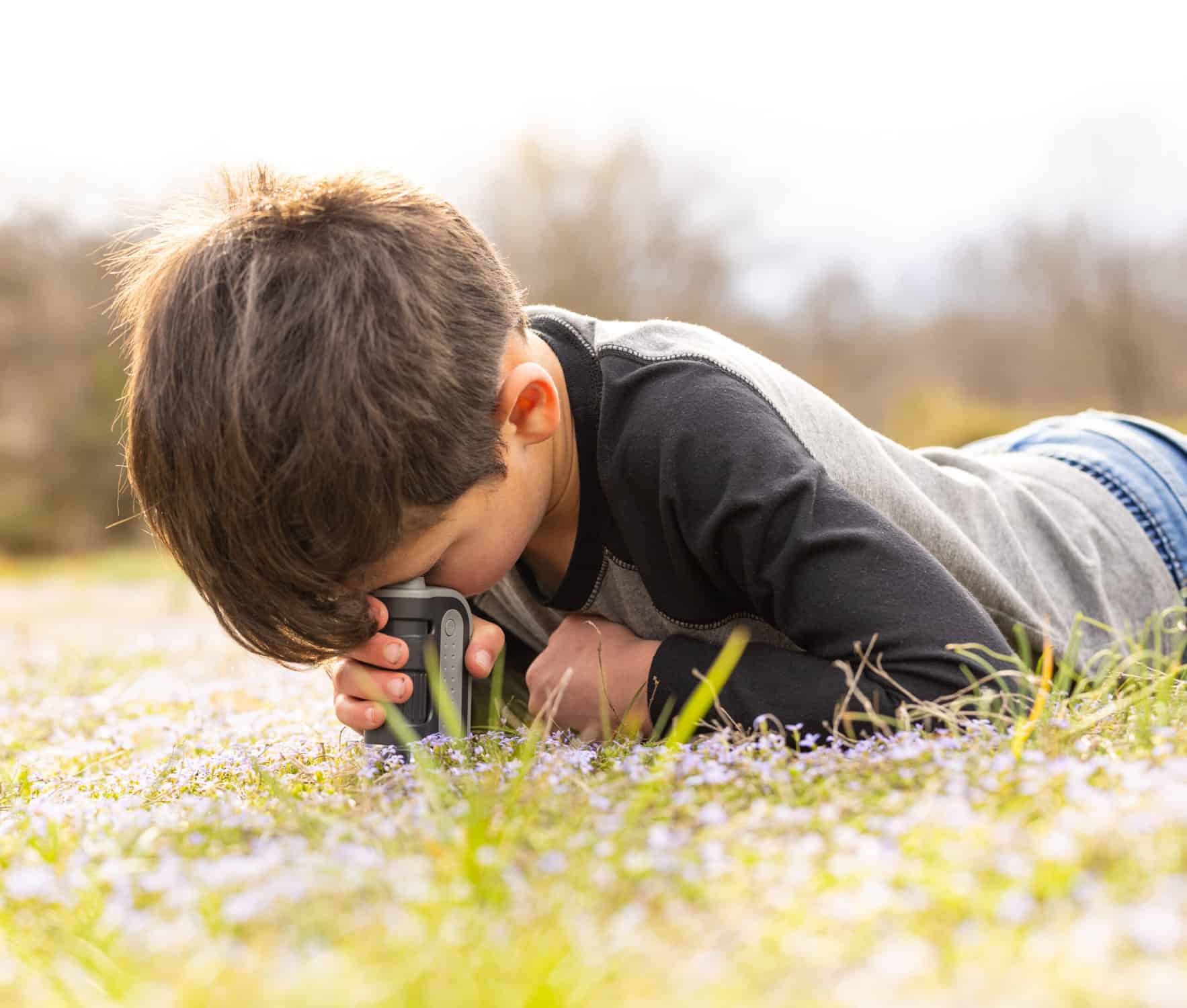
What can you do with a pocket microscope?
Practice with different items around the house until you feel confident passing your newfound skills to your kids, with the eventual goal of taking your microscope outside with you and using it for all the things you find on your nature walks!
When you’ve had a lot of experience manipulating the zoom adjustment and focus ring, you can even use the pocket microscope up against a tree or flower, as long as you’re able to hold it steady and the object you’re looking at doesn’t move around.
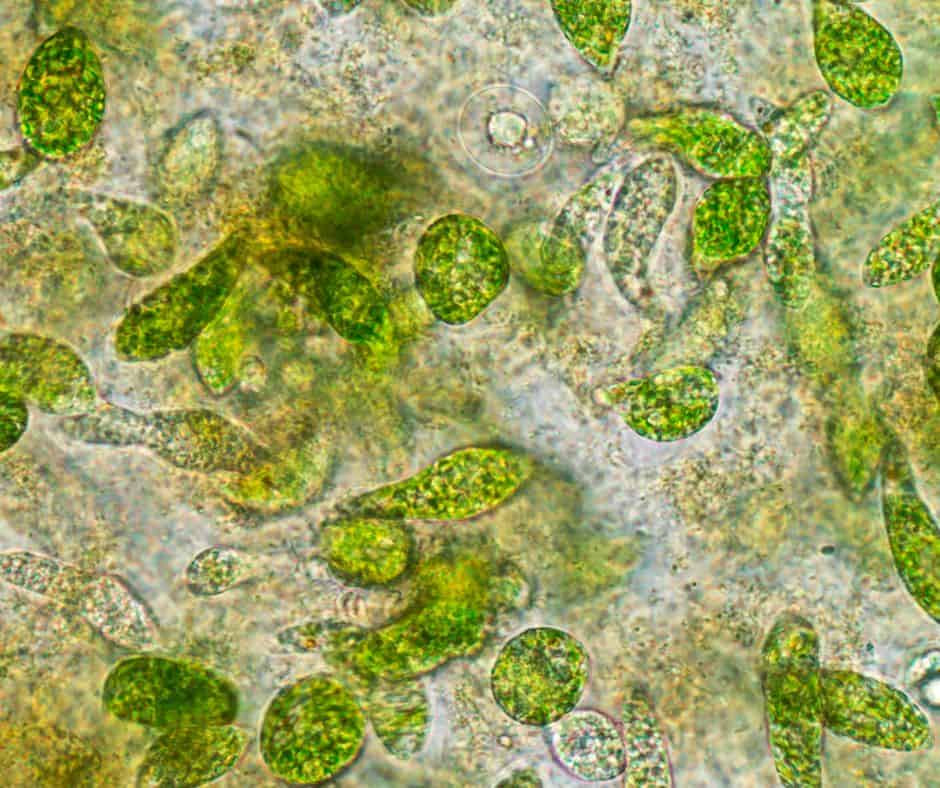
Looking at nature finds
Some of our favorite nature treasures to view with a microscope are:
- sand
- soil
- butterfly wings
- insect legs
- bark
- lichens
- moss
- flower petals
- seeds
- broad leaves
- needle leaves
- algae
- droplets of pond water
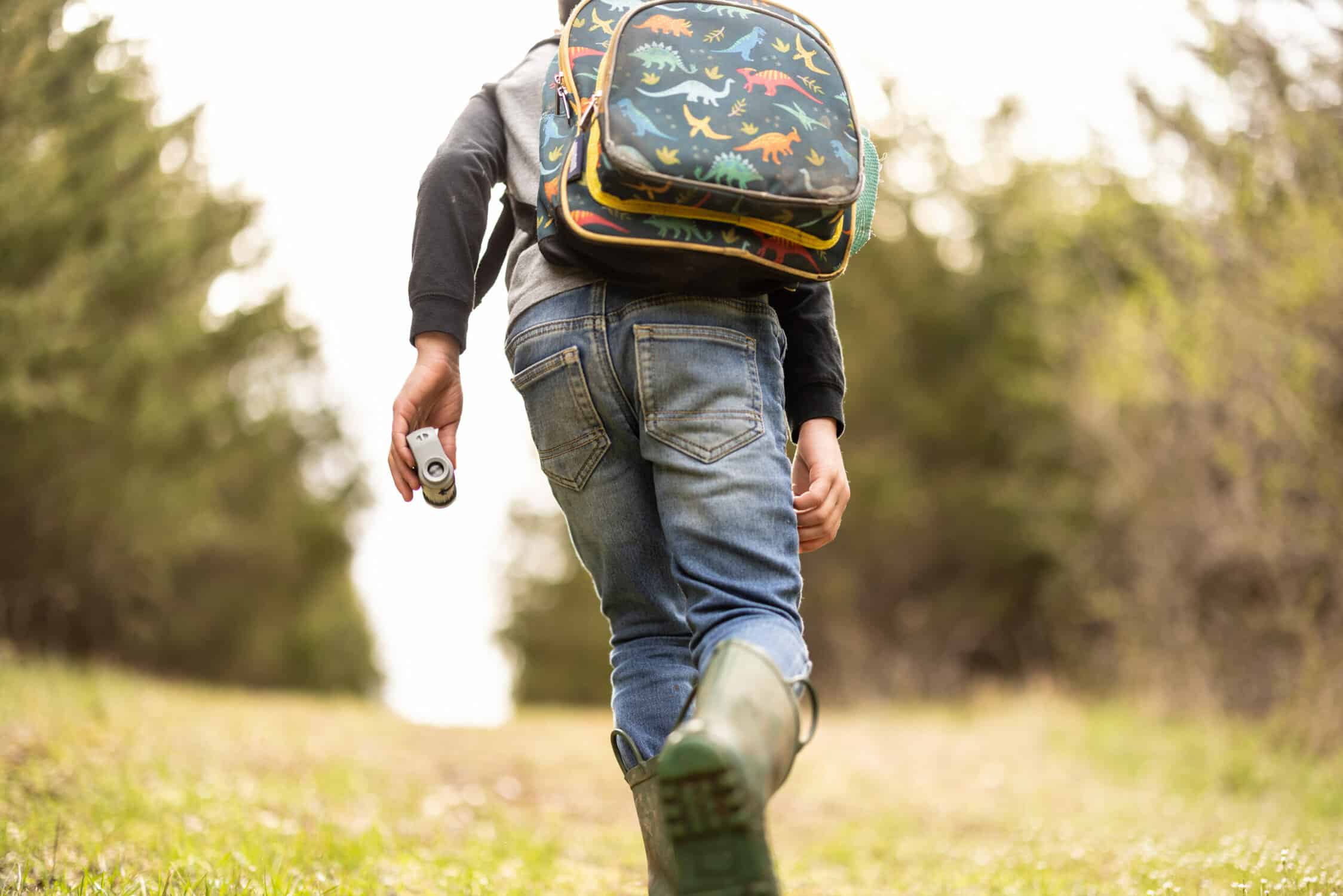
Benefits of using a pocket microscope in nature
Using a microscope in nature really helps you to slow down and appreciate the intricacies and details of things you see every single day. You’ll literally stop to smell and see the roses (and all the other flowers along the trail as well).
It also gives your kids invaluable and concrete STEM skills. But more than that, it nurtures their creativity, curiosity, and imagination. It instills a sense of wonder.
The plethora of features to see on even the tiniest bit of nature is surprising. Hairs and pores dot leaves and insect legs, scales cover butterfly wings, jagged edges surround bits of sand, and minute creatures scurry in soil and pond water.
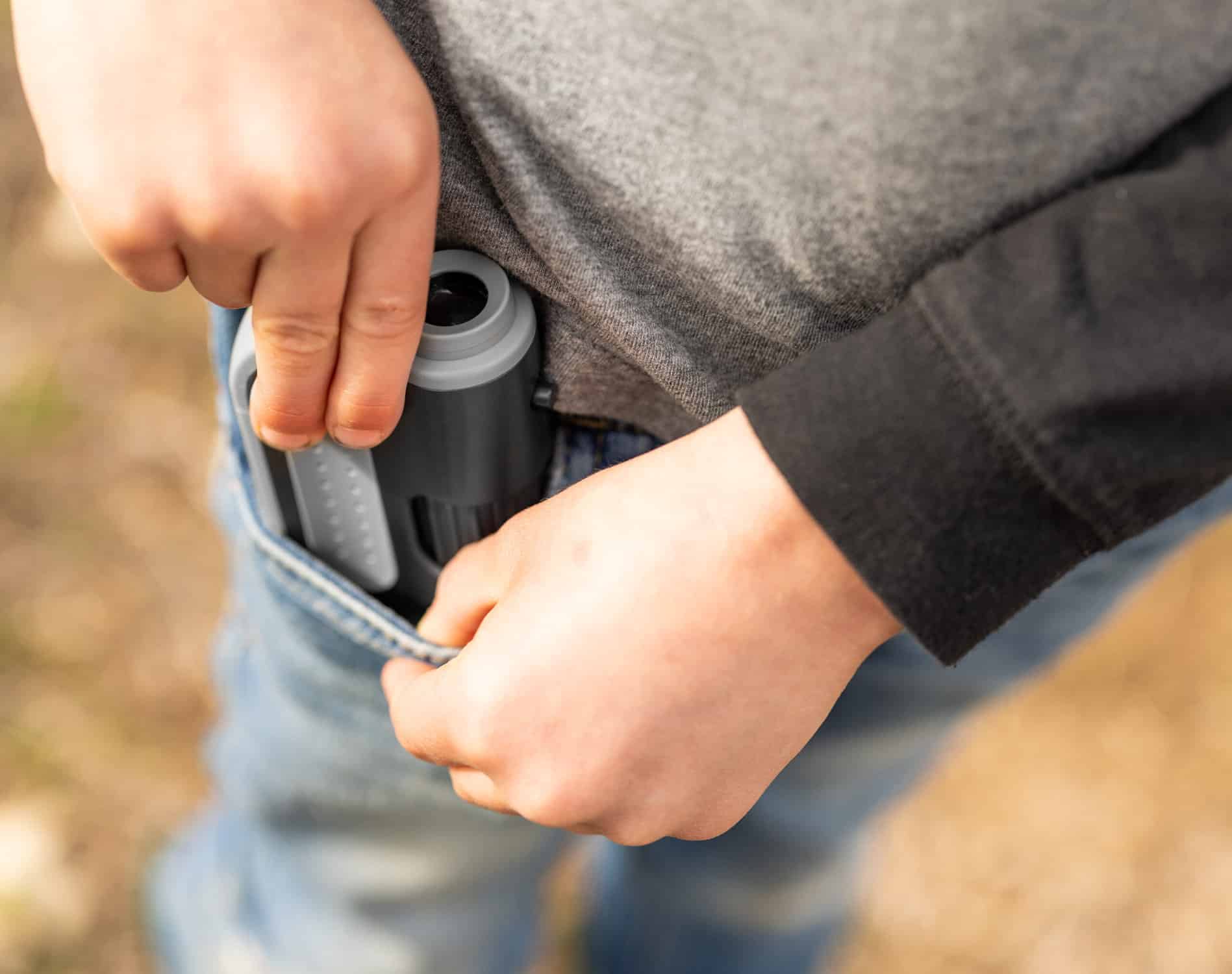
Add a pocket microscope to your next outdoor adventure
You can hone your observation skills by doing simple nature journaling activities while using your microscope. Draw and label items that you see while out in nature. Then, look at the same items again, but under the microscope. Draw another illustration of what the object looks like close-up. What details did you notice after using the microscope that you did not see originally?
Pocket microscopes are fun tools to use when you go hiking on a trail or around your neighborhood. Usually, my backpack ends up holding ALL the things on a hike – water bottles, rocks, sticks, bones, you name it.
Since these microscopes aren’t heavy or awkward, kids don’t mind carrying them and rather enjoy having them close by to grab when the notion strikes.
Toting a microscope in their pocket and having easy access to it on a hike just makes sense. You’ll probably even find yourself asking your kids if you can use it, too.
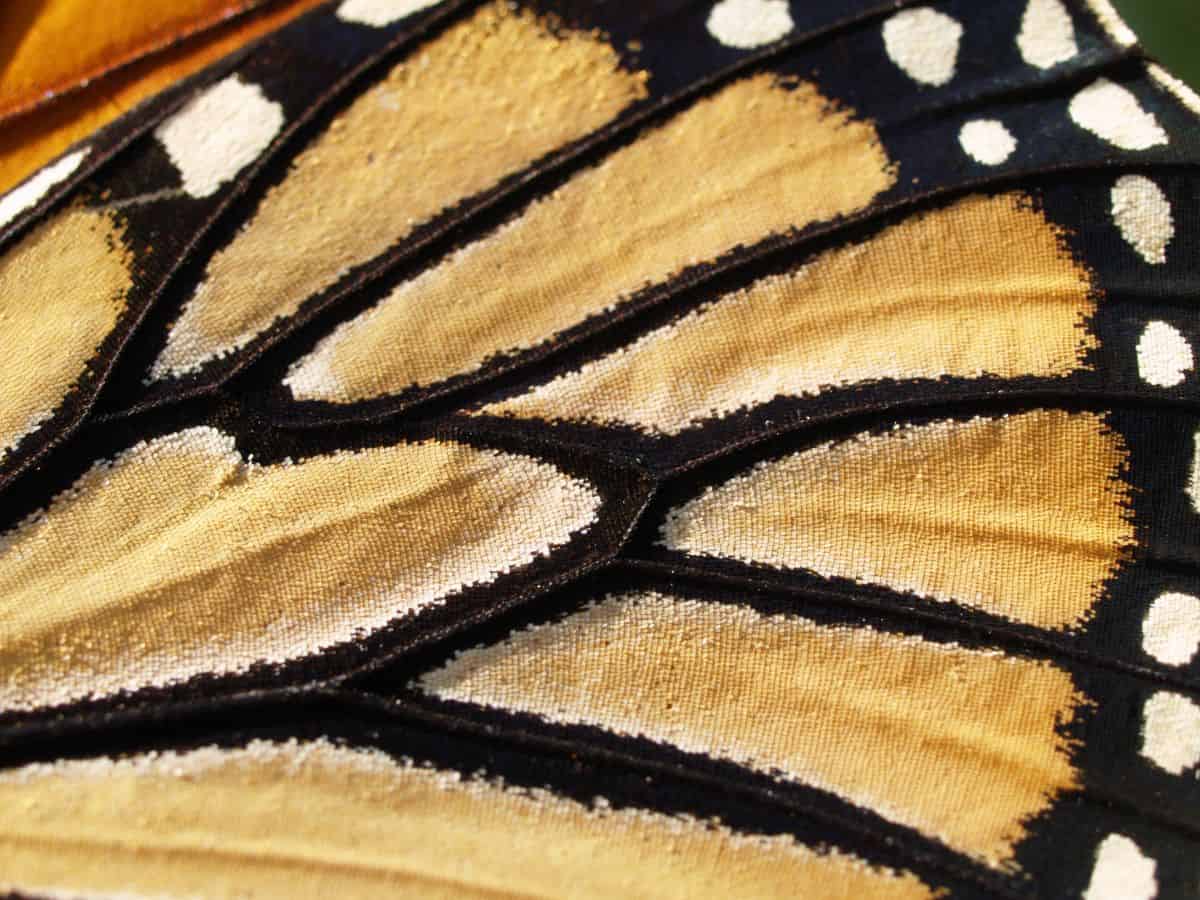
Have you ever used a pocket microscope?

About the author
Laura is an ecology writer and the founder of Firefly Nature School, a nature study curriculum designed for homeschooling families, co-ops, and classrooms. Laura has a Bachelor of Science degree in Animal Ecology from Iowa State University with an emphasis in natural resource education. A former wildlife conservation educator and upper school science teacher, she now directs School of the Wild, a local nature school serving her community. In her free time, she enjoys traveling with her family, hiking, running, writing, reading, and cooking. Laura lives with her husband and their three children in the beautiful Ozarks countryside.
Find more from Laura in the following locations:
Website: Firefly Nature School
Instagram: @fireflynatureschool
Facebook: Firefly Nature School
RWMC posts: Laura








2 comments